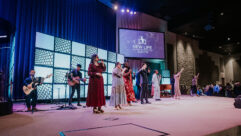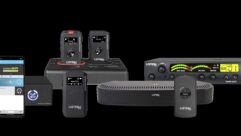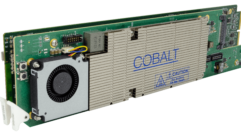THE APPLIANCE of the new millennium
Oct 1, 2000 12:00 PM,
Nathaniel Hecht
Computers are now an integral part of our lives; of this, there is no argument. The interesting thing is that for most children, the computer has become just another appliance, similar to the refrigerator or washing machine, albeit more entertaining and potentially life enriching. Considering the computer’s importance, it amazes me that the audio facilities on most of today’s computers are of such an inferior quality.
Consider this parallel from entertainment electronics history. In the 1950s and 1960s, few considered television audio all that important, despite the advances in audio available in the local movie theater. Most people were so amazed at the combination of pictures and sound in the home that no one thought of hooking up the television’s audio output to the home stereo. In many ways, we are at the same evolutionary crossroads with the computer. Most people suffer with loudspeakers that can best be called a compromise, and the cheapest possible sound card is often the norm. Although many good cards are available, the need for lower distortion and higher quality it is not yet widely understood.
It is the revolution in Internet audio that may be drawing attention to this area of inadequacy. The widespread use of MPEG-3 files was the catalyst that helped people see the inadequacy of their computer audio systems. As more and more people use the computer for entertainment, the demand for higher and higher quality audio will follow.
What about the computer as the control center for audio, automation and many other functions offered in the average professional A-V installation? The argument against using computers for audio and video processing has been based upon expense and reliability. With computers now being affordable and reliability issues dwindling, the only variable left seems to be software. We have evolved this far in our industry with mostly hardware solutions, finding reasons for the computer not to be included in the mix. We seem to be at a similar point with the use of computers in installations. DSP engines are now widely available from many manufacturers for loudspeaker system and routing control applications, but all we have to do is look at the development of computer tools in the creative audio and video production side of the industry to see where we might be heading. If anything, DSP engines are only the tip of the iceberg.
There are numerous platforms for processing audio and video available on the market, with different types of plug-in modules that emulate in software many different effects formerly available only in hardware form. Although many of these programs are expensive and require some hardware to interface with conventional computer systems, they are essentially complete production systems replicated on board level for use with conventional computer systems. Is it hard to envision a future where a computer is the center of all control and signal manipulation in a given installed system? There may always be such reasons for hardware solutions as safety issues and building code requirements for redundancy, but the conclusion that we are headed for a more computer-oriented industry in the installation side is inevitable. As a result, developing the skills needed to meet this need is vitally important if we are to maintain control of our market. Adapting to and becoming familiar with the installation processes and the software issues surrounding this computer-based future will, in many cases, make or break the future of contractors in our business.










